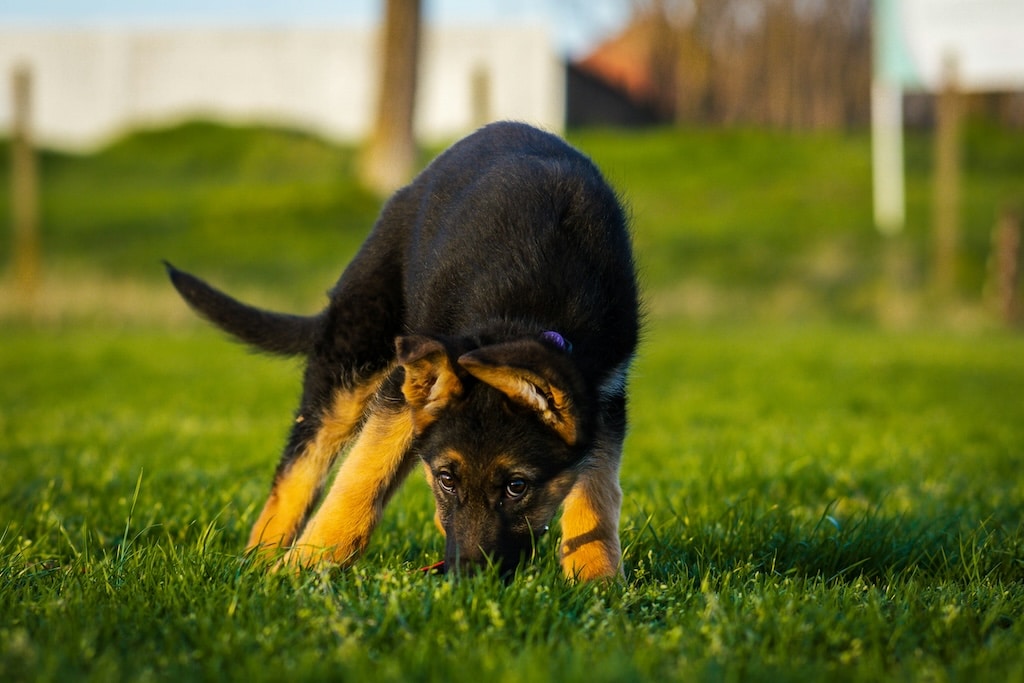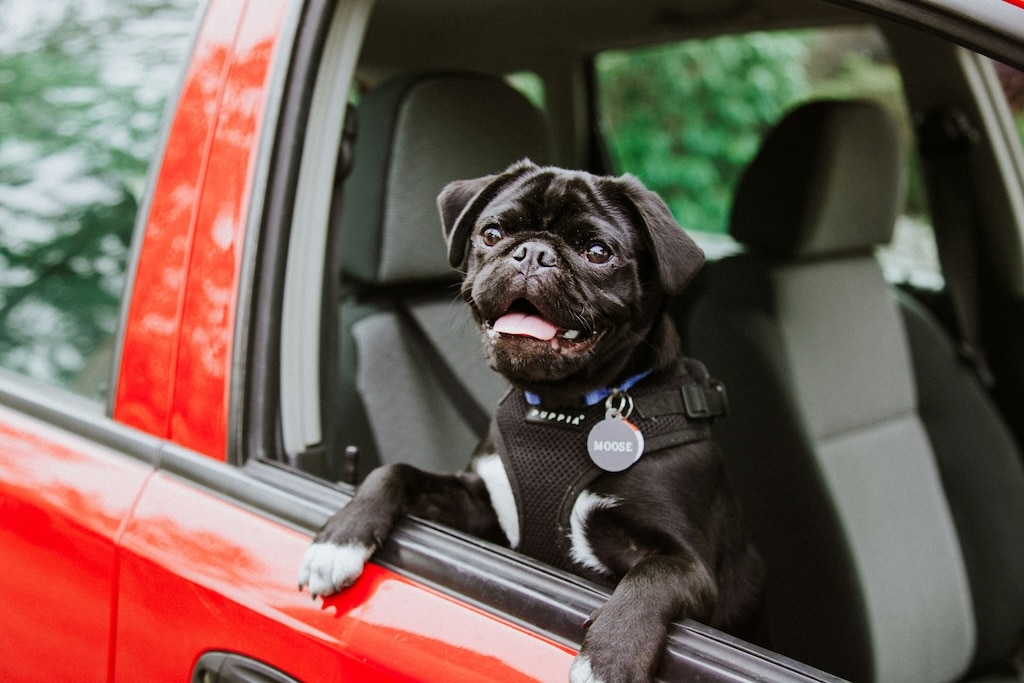Spring brings Fort Worth’s green spaces bursting into bloom. With it come plenty of opportunities for your dog to get out and explore their world. All this fresh greenery might pique your pup’s curiosity, and you might occasionally notice your pup chomping down on fresh grass. Still, if you’ve ever wondered whether it’s safe for your dog to graze, you aren’t alone. In this blog, we’ll explore the common reasons dogs eat grass, whether it’s safe and what you can do about it.
Top Reasons Dogs Eat Grass
If your dog starts eating grass, hunger might be part of the issue. However, it’s not the only reason. Consider a few other common causes of canine grazing.
Instinctive “Scavenger” Behavior
Yes, dogs are domesticated, but their wild instincts aren’t totally inert. Domestic canines’ ancient ancestors were scavengers who primarily ate prey animals. The dead animals’ stomach contents often contained grass and other fibers. When consumed by ancient canines, that grass provided an excellent source of fiber. Therefore, modern dogs may still eat grass because they were “programmed” to do so through years of evolutionary development.
Fiber & Digestion Needs
Because many dogs instinctively recognize grass as a good source of fiber, they might start eating it if they need to add extra roughage to their diets. If your dog’s eating habits seem grass-heavy, talk to your vet about dietary tweaks. Some owners notice improvements in digestion after switching to a higher-fiber dog food.
Boredom or Anxiety
Many humans eat more when bored or anxious, and the same is true for some dogs. If your dog is suffering from anxiety, loneliness or boredom, they might begin to eat grass. It can serve as a distraction that provides both entertainment and comfort. However, through enrichment like scent games, puzzle toys and extra walks, you can help your dog avoid nervous eating.
Self-Soothing for Mild Nausea
You may have heard that dogs eat grass to calm an upset stomach. Still, you might also have seen a dog eat grass and throw up shortly afterward. This creates something of a “the chicken or the egg” question for many dog owners. However, the research is somewhat ambiguous on this point. Studies show that only about 22% of dogs vomit after eating plants. Moreover, less than 9% show signs of illness before grazing. Therefore, occasional nibbling may offer some dogs mild digestive relief. However, the habit may also not necessarily indicate sickness (or trigger nausea afterward).
Is Eating Grass Safe for Dogs—or Something to Worry About?
On the one hand, eating grass may offer your dog some digestive benefits. Many dogs simply enjoy the taste or texture of grass, and mild, infrequent nibbling is often instinctive. Still, while eating grass isn’t always dangerous, it can become risky. A few concerns associated with dogs eating grass include:
- Pesticides & Fertilizers: Grass and foliage in Fort Worth’s residential and public areas are often treated with pesticides and fertilizers throughout the spring and summer. These chemicals may be harmful for dogs in multiple ways, particularly if ingested.
- Intestinal Parasites: Grass and soil might provide warm, humid environments that are perfect areas for parasites like roundworm to thrive. Dogs that eat grass risk ingesting these pests.
- Vomit-related Dehydration: If your dog is one of those who vomits after eating grass, then they run the risk of becoming dehydrated. In Fort Worth’s often-extreme heat, loss of moisture can be extremely dangerous.
- Choking or Obstruction: Long blades of grass, twigs, small pebbles and other debris your dog might eat run the risk of choking them. This is a particularly significant risk for smaller dogs.
In short, if your dog’s just munching grass here and there, it’s usually fine. Just pay attention to how often, where and how your pup reacts.
When to Call the Vet
If your dog begins to exhibit any of the following signs after eating grass, contact your veterinarian:
- Repeated vomiting or dry heaving
- Abdominal bloating or visible discomfort
- Black, tarry or bloody stools
- Sudden drop in appetite or energy
Stopping Grass Eating: Tips from Dog Trainers
If you want to worry less about your dog’s habit of eating grass, a few behavior adjustments might be just the ticket:
- Reinforce the “Leave It” command: Teaching your pup to respond when you tell them not to eat grass—and immediately rewarding them with a generous treat when they do—can help them learn to associate avoidance with a payoff.
- Adopt fiber-rich alternatives: Eating grass may be a sign that your dog needs more fiber in their diet. Fiber-rich treats or food may help reduce your dog’s temptation to chow down on grass or other foliage.
- Boost mental stimulation: Bored dogs might be more likely to munch on grass. Try 10 minutes of scent work, obedience games, or enrichment activities to help them engage mentally and reduce distractions.
It’s important to remember that your dog might instinctually want to eat grass. Therefore, you should also keep your outdoor environment as safe as possible for them. For example, stick with pet-safe lawn treatments and keep your dog off the grass for at least 48 hours after application. Additionally, stay on top of flea, tick, and worm prevention. Fort Worth’s temperatures can range from very hot summers to relatively mild winters, creating conditions where grass-borne parasites can thrive year-round. The better you protect your pup, the less you may have to worry about if they graze from time to time.
Ready for a Grazing Free Walk?
Your dog eating a little grass here and there will likely not be a problem. Still, it does have its fair share of risks. If your pup’s grazing is getting out of hand, we can help. Sit Means Sit Fort Worth’s trained experts teach valuable obedience and behavior modification techniques that can help your dog learn to avoid danger zones and cut back on grass-munching habits. Get a free evaluation and let us help your dog start living a much more grass-free life.


